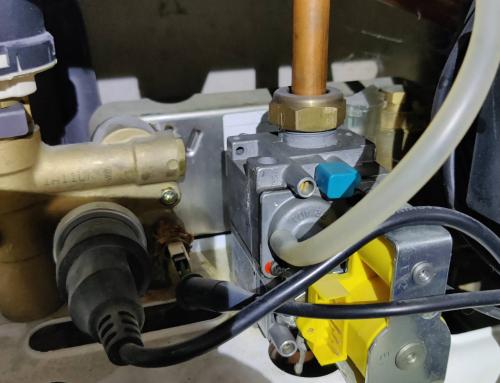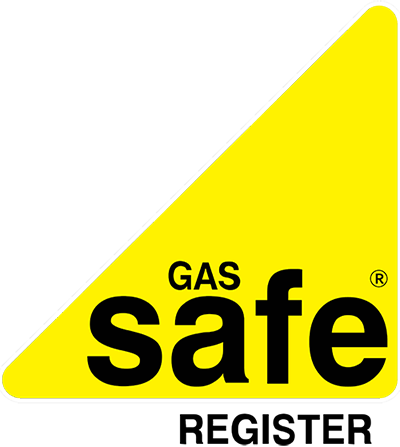Carbon Monoxide
Carbon monoxide (CO) is a colourless, odourless, tasteless, poisonous gas produced by incomplete burning of carbon-based fuels, including gas, oil, wood and coal. CO poisoning can be fatal or cause permanent damage to your health.
Where does CO come from?
Co can be produced in all fuel burning appliances that are not regularly service and maintained such as cookers, gas fires and wall heaters , boilers and water heaters. Dangers signs that CO may be leaking include yellow or orange flames where there should normally be blue ones and sooty stains on the walls around fires or water heaters or any fuel burning appliance. You could also be poisoned by CO if you share a wall or chimney with a house that has a CO leak, even if your house does not have one. You can’t see it, taste it or smell it but CO can kill quickly without warning. According to the Government statistics every year around 25 people die from CO poisoning caused by gas appliances and flues that have not been properly installed, maintained or regular servicing and that are poorly ventilated. Levels that do not kill can cause serious harm to health if breathed in over a long period. In extreme cases paralysis and brain damage can be caused as a result of prolonged exposure to CO. Increasing public understanding of the risks of CO poisoning and taking sensible precautions could dramatically reduce this risk.
There are signs that you can look out for which indicate incomplete combustion is occurring and may result in the production of CO;
Yellow or orange rather than blue flames (except fuel coal effect fires or flueless appliances which display this colour flame)
Soot or yellow/brown staining around or on appliances
Pilot lights that frequently blow out
Increased condensation inside windows
There are a number of simple steps that gas consumers can take to keep themselves safe.
Use this check list to check for CO leaks
1 Check the colour of the flames in your appliances. If they are orange, there may be a problem. Whatever the colour, you should get your gas appliances serviced every year.
2 Make sure your chimney flue isn’t blocked. If you have birds nesting in it, remove the nest and then fit a bird guard to stop them nesting in the future.
3 Do you have an eye level gas grill? These can be particularly dangerous so check yours is working properly. Older cookers can cause problems so use the electric toaster for now. Get your cooker checked !!
4 Is there enough ventilation in your home, with most modern houses been well insulated and double glazed, check air vents are not blocked and of the right size for your appliances , lack of air can produce CO.
5 When did you last get your appliances checked? Get them checked annually, a safety check and service is essential for maintaining your appliances – don’t leave it to chance. Use on qualified engineers and ask to see their identification. They must be registered with one of the following organisations:-
National Grid phone 0800 111999
Gas Safe Register phone 0800 4085500
HETAS Ltd phone 01462 634721
APICS (Association of Professional and Independent Chimney Sweeps) phone 0845 6585080
OFTEC (oil)phone 0845 6585080
NACs ( National Association of Chimney Sweeps) phone 01785811732
6 Do you suffer or have suffered from tiredness, unexplained illnesses muscle pains and aches, upset stomach, dizzy spells and regular headaches or have your family members suffered from these symptoms? if you have or your family members have go and consult with your doctor immediately for a carbon monoxide test because the CO in your blood will drop once you are in fresh air and the carbon monoxide test may not detect the correct CO levels in your blood.
7 Are you a tenant? If you are your landlord/lady should provide a current gas safety inspection certificate stating that all appliances have been checked and serviced.
Carbon Monoxide can be produced by any combustion appliance, including those that burn fossil fuels e.g. oil, wood and coal. If you have one of these appliances you should make sure that it is serviced and maintained by a competent person and the chimney is regularly swept.
Early symptoms of carbon monoxide (CO) poisoning can mimic many common ailments and may easily be confused with food poisoning, viral infections, flu or simple tiredness. Symptoms to look out for include:
- headaches or dizziness
- breathlessness
- nausea
- loss of consciousness
- tiredness
- pains in the chest or stomach
- erratic behaviour
- visual problems
For more information visit the NHS or telephone NHS Direct on 0845 4647.
If you or your family experience any of the above symptoms and believe you may have been exposed to carbon monoxide, you should seek urgent medical advice from either your GP or an A&E department.








